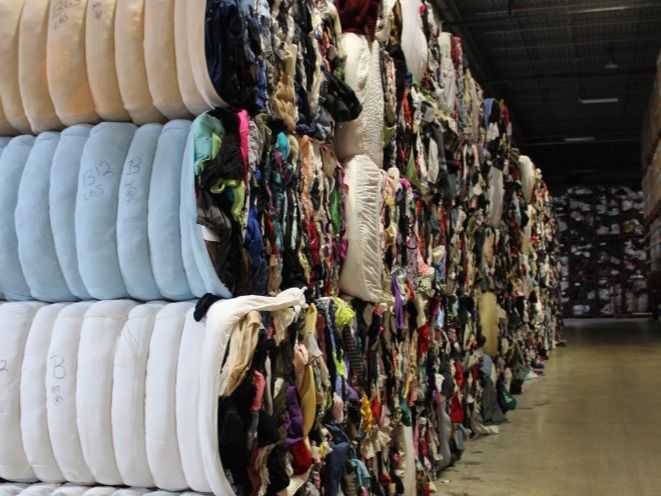Approved by curator

Added: Sep 06, 2022
Last edited: Sep 07, 2022
Buzigahill was founded in 2022 by Ugandan designer Bobby Kolade. The local Ugandan textile trade has struggled since the 1970s due to the influx of low price secondhand goods from the Global North. Along with an economic impact, a large proportion of the donated clothes are worthless and will ultimately clog up landfills, resulting in environmental and health implications. Buzigahill’s mission is to challenge Uganda’s position as a textiles waste bin, revitalising manufacturing by using waste as a commodity to upcycle garments, and selling them back to countries, where the clothing came from. This, in turn, will create decent and dignified employment.
In the 1970s, Uganda produced 84,000 tons of cotton yearly and processed 85% of it for local consumption. Today, only 5% of Ugandan cotton is consumed by its people, with the rest being exported in its raw form. The local textile industry is unable to compete with the low price of used clothing and 80% of clothing purchases are second-hand.
Each day, millions of unwanted clothes from thrift stores and donation bins in the Global North are exported to cities across Africa, Asia, and Latin America. The vast majority of clothes are ultimately discarded, overwhelming African landfills; for example, in Accra Ghana, 40% of the 15 million used garments that flood into the city every week are deemed worthless upon arrival.
Traditionally, cotton played an essential role in Uganda's development. The second-hand clothing trade has had a detrimental impact on youth unemployment, education, national morale, and Ugandan society at large.
In the first drop of 250 pieces, Kolade built the collection entirely based on the content of purchased bales filled with second-hand clothing. The collection treats second-hand clothes as raw material, creating new garments to be sold to customers in countries like the US and UK, from where the discarded clothing first came from. The design is reactionary to the overconsumption of the Global North and the role Africa plays as “a very effective waste disposal system for people’s clothes”. Each piece is unique, made from garments that have been cut up and stitched back together. Every garment has a ‘passport’ to identify the country of origin and source of the bale.
Kolade’s quote best exemplifies Buzigahill's solution: “Waste has already become a commodity, but it’s going to become an even more important one. So the sooner we’re able to create industries using this waste as a commodity, the more progress we’re going to make as a region.”
As Buzigahill only launched this year, it is not possible to report on its impact, however, it has big ambitions. The ultimate goal is to return Uganda‘s textile industry to the peak levels of the early 1970s when more cotton was processed than exported. To achieve this, Bobby Kolade has a 10-year plan to revitalise Ugandan manufacturing, planning to build small, specialised factories spread out across the country. These factories will not only repurpose used clothing but also support hand-woven textiles and artisanal production.
Image by Waldemar Brandt from Unsplash

Stretch the lifetime
Use waste as a resource
Maximise lifetime of products after use
Valorise waste streams - closed loop
Refurbishment, remanufacturing, renovation
Closed loop upcycling
Ecological Impact
Social Impact
Economic Impact
Jobs
Equality
Revenue Potential
Innovation
Reduce Material Consumption (SDG12)
Minimise Waste (SDG12)
Inform
Encourage workplace training
Mobilise
Visions and Ambitions
Roadmaps and strategies and targets
Regulate
Legislation
Bans
regional manufacturing
secondhand markets
upcycling collection
reshoring
